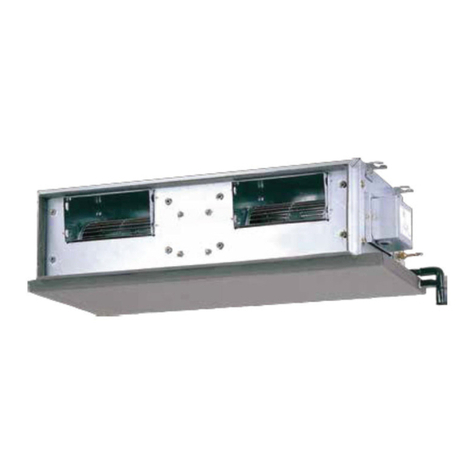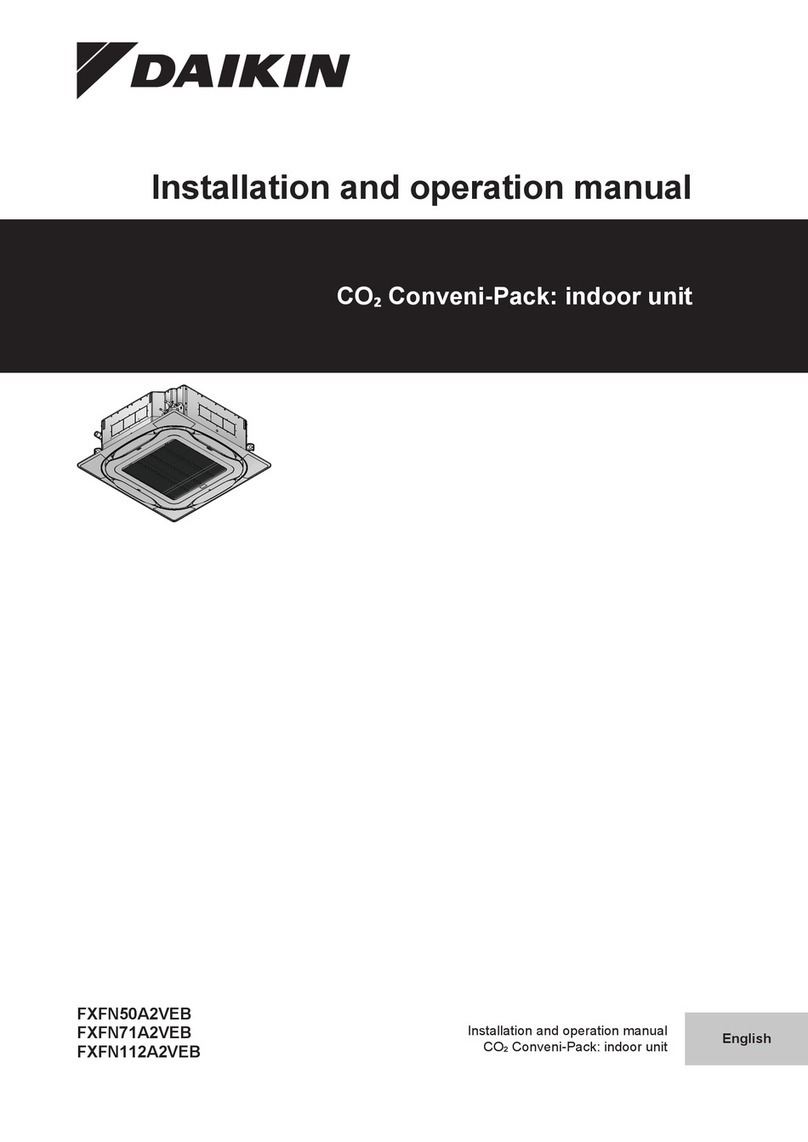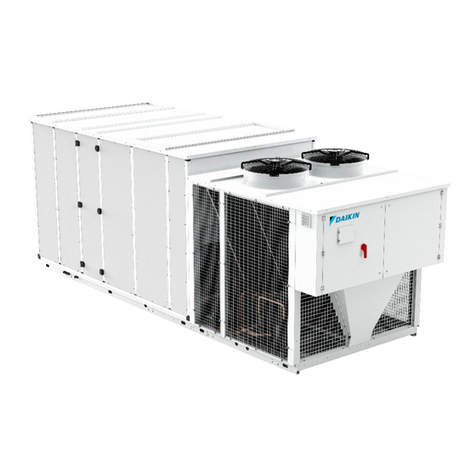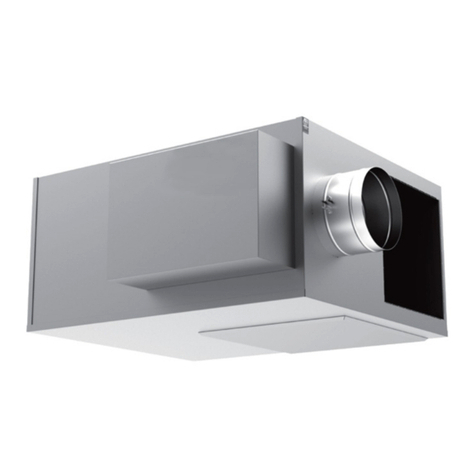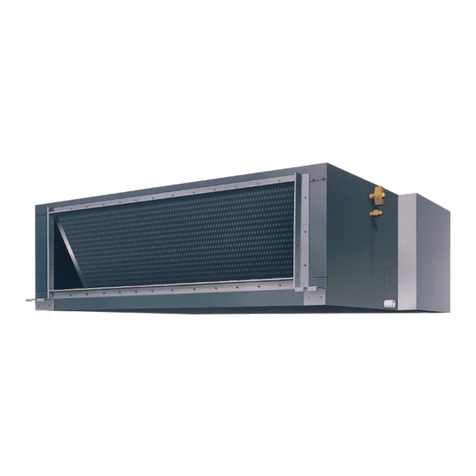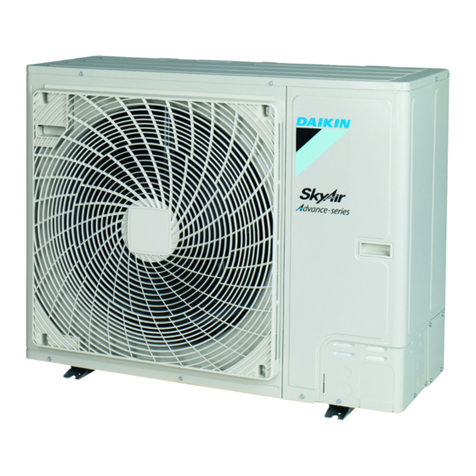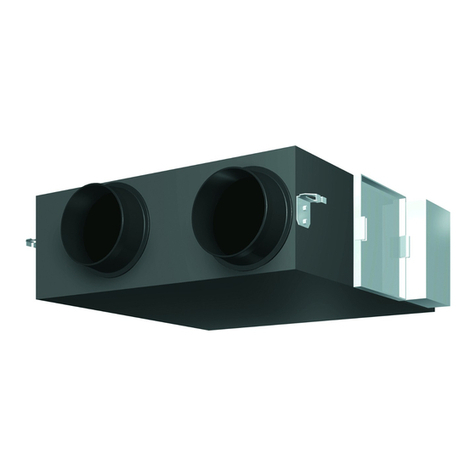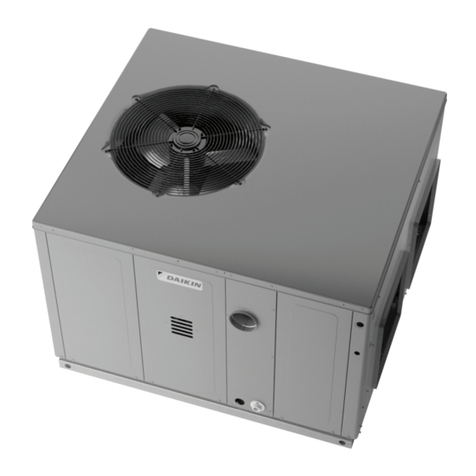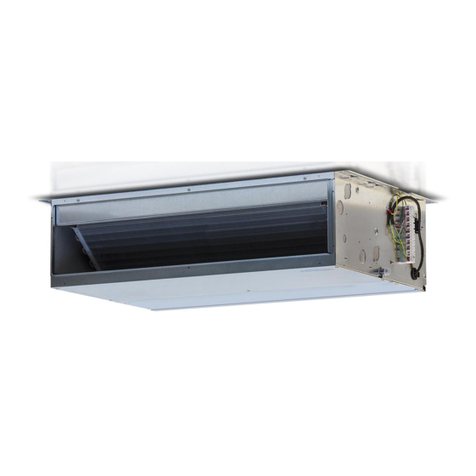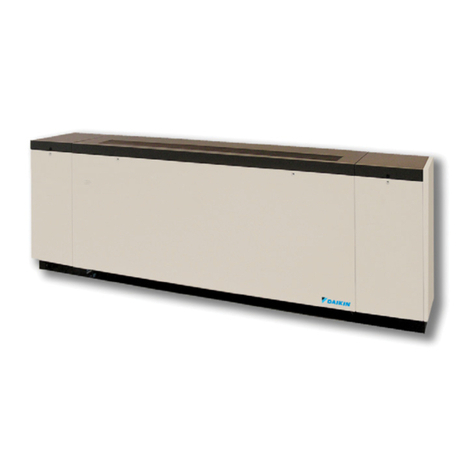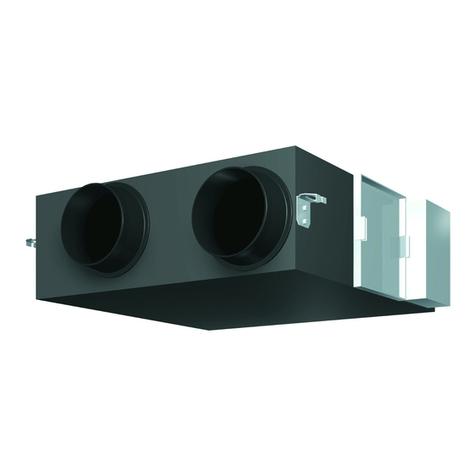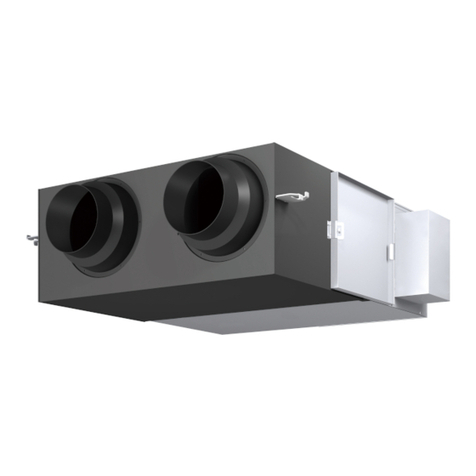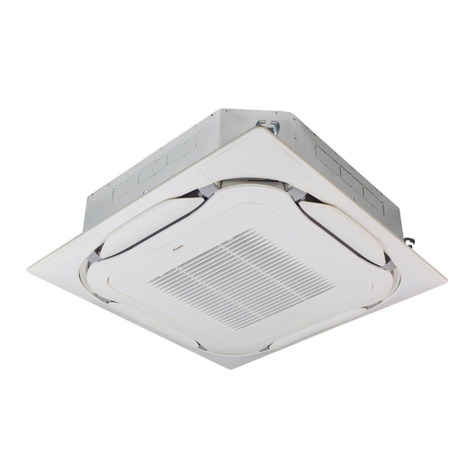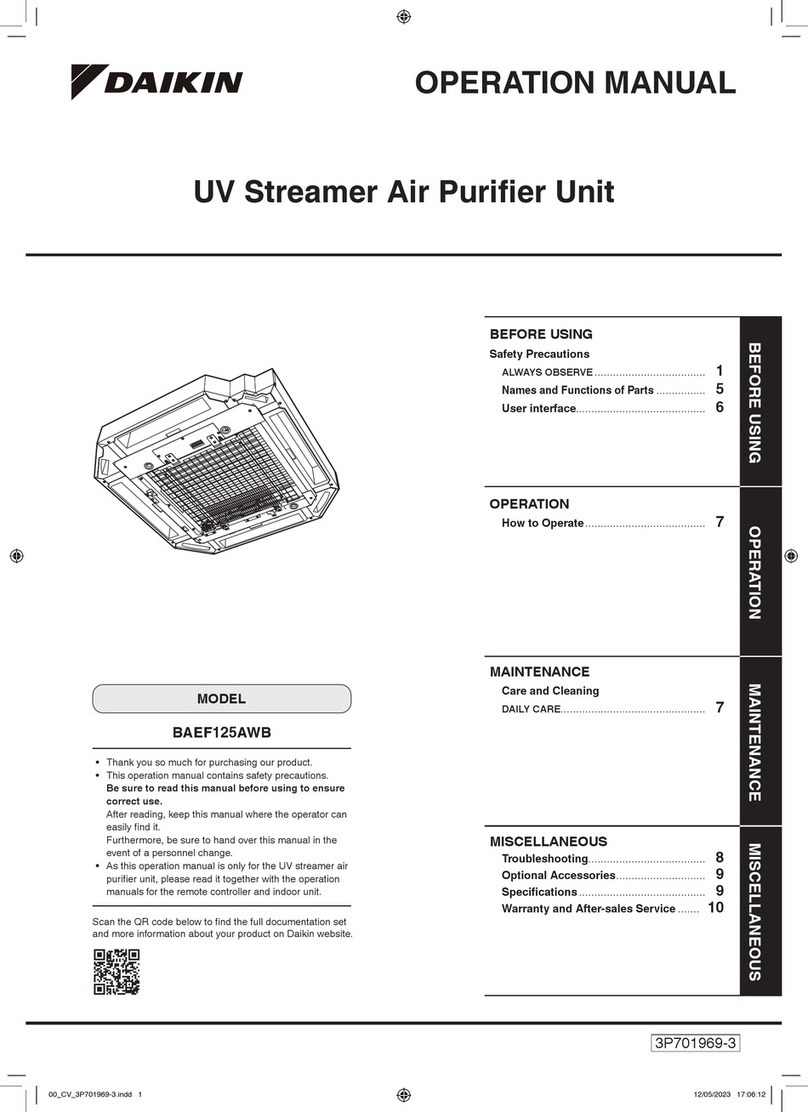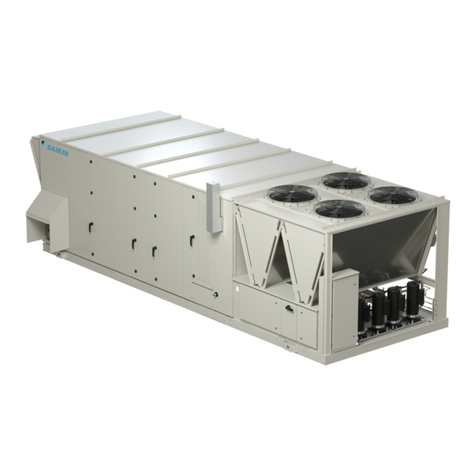
5
SYSTEM OPERATION
The refrigerant used in the system is R-410A. It is a clear,
colorless, non-toxic and non-irritang liquid. R-410A is a
50:50 blend of R-32 and R-125. The boiling point at atmo-
spheric pressure is -62.9°F.
A few of the important principles that make the
refrigeraon cycle possible are: heat always ows from
a warmer to a cooler body. Under lower pressure,
a refrigerant will absorb heat and vaporize at a low
temperature. The vapors may be drawn o and condensed
at a higher pressure and temperature to be used again.
The indoor evaporator coil funcons to cool and
dehumidify the air condioned spaces through the
evaporave process taking place within the coil tubes.
Liquid refrigerant at condensing pressure and
temperatures, (270 psig and 122°F), leaves the outdoor
condensing coil through the drier and is metered into the
indoor coil through the metering device. As the cool, low
pressure, saturated refrigerant enters the tubes of the
indoor coil, a poron of the liquid immediately vaporizes.
It connues to soak up heat and vaporizes as it proceeds
through the coil, cooling the indoor coil down to about
48°F.
Heat is connually being transferred to the cool ns and
tubes of the indoor evaporator coil by the warm system air.
This warming process causes the refrigerant to boil. The
heat removed from the air is carried o by the vapor.
As the vapor passes through the last tubes of the coil, it
becomes superheated. That is, it absorbs more heat than is
necessary to vaporize it. This is assurance that only dry gas
will reach the compressor. Liquid reaching the compressor
can weaken or break compressor valves.
The compressor increases the pressure of the gas, thus
adding more heat, and discharges hot, high pressure
super-heated gas into the outdoor condenser coil.
In the condenser coil, the hot refrigerant gas, being
warmer than the outdoor air, rst loses its superheat by
heat transferred from the gas through the tubes and ns
of the coil. The refrigerant now becomes saturated, part
liquid, part vapor and then connues to give up heat unl
it condenses to a liquid alone. Once the vapor is fully
liqueed, it connues to give up heat which subcools the
liquid, and it is ready to repeat the cycle.
The heang cycle is accomplished by using a unique
tubular design heat exchanger which provides ecient gas
heang on natural gas fuel. The heat exchanger’s compact
tubular construcon provides excellent heat transfer for
maximum operang eciency.
The induced dra blower draws fuel and combuson air
into the burner and through the heat exchanger for proper
combuson.
Blower operaon is controlled by the integrated control
module. The module allows for eld adjustment of the
blower delay at the end of the heang cycle. The range
of adjustment is 90, 120, 150 or 180 seconds. The factory
delay sengs are 30 seconds delay on, 150 seconds delay
o.
DP14UM/DP16UM units are equipped with a direct spark
ignion system. Ignion is provided by a 25,000 volt
electronic spark. A ame sensor then monitors for the
presence of ame and closes the gas valve if ame is lost.
1. When the thermostat calls for connuous fan (G) with
out a call for heat or cooling, the indoor the fan has
a 7 second delay on make and energizes the “HEAT”
speed. The fan remains energized as long as the call
for fan remains without a call for heat or cooling. The
fan call “G” has a 60 second delay on break. Note:
When the Conguraon tab is broken, the connuous
fan mode “G” will have a 7 second delay on make and
a 60 second delay on break and the “COOL” speed tap
will be energized.
2. If a call for cool (Y) occurs during connuous fan, the
blower will switch over to “COOL” speed.
3. If a call for heat (W) occurs during connuous fan, the
blower will remain energized through the heat cycle
or unl “G” is de-energized.

